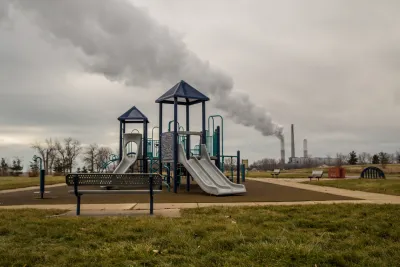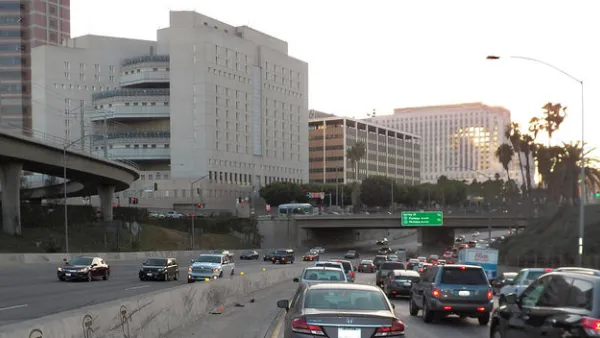With the signs of climate change all around, the effects of the Trump administration's environmental regulation rollbacks look increasingly dire.

Nadja Popovich and Brad Plumer share the news about a new report by the Rhodium Group that quantifies the effect of the Trump administration's environmental rollbacks in terms of climate emissions. In total, the Trump administration's environmental rollbacks will emit an additional 1.8 billion metric tons of climate emissions equivalent to carbon dioxide by 2035.
The article includes infographics that provides scale to the data revealed by the report, including a breakdown of emissions by type—methane for oil and gas operations, methane for landfills, hydrofluorocarbons, fuel efficiency standards, and removing California's vehicle emissions authority. The two largest sources of emissions enabled by Trump administration policies are the methane for oil and gas operations, at 592 million metric tons of carbon dioxide equivalent, and the California vehicle authority, at 573 million metric tons.
For perspective, Popovich and Plumer report that the total 1.8 billion metric tons of carbon is more than the combined emissions of Canada, Germany, and Britain. The article also notes that the report only accounts for some of the potential effects of Trump administration environmental policies: more changes are still in the works, like the Energy Department's "plans to change federal rules that would have required more efficient light bulbs," and the decision to repeal and replace the Obama-era Clean Power Plan. "It is unclear what effects [the Clean Power] move will ultimately have," according to Popovich and Plumer. "Many states have been retiring coal plants and shifting to cleaner alternatives recently — because of the falling cost of natural gas, wind and solar power — and were already beating the targets set by the Obama-era rule."
Additional coverage of the Rhodium report is available from Ben German for Axios.
FULL STORY: What Trump’s Environmental Rollbacks Mean for Global Warming

National Parks Layoffs Will Cause Communities to Lose Billions
Thousands of essential park workers were laid off this week, just before the busy spring break season.

Retro-silient?: America’s First “Eco-burb,” The Woodlands Turns 50
A master-planned community north of Houston offers lessons on green infrastructure and resilient design, but falls short of its founder’s lofty affordability and walkability goals.

Delivering for America Plan Will Downgrade Mail Service in at Least 49.5 Percent of Zip Codes
Republican and Democrat lawmakers criticize the plan for its disproportionate negative impact on rural communities.

Test News Post 1
This is a summary

Test News Headline 46
Test for the image on the front page.

Balancing Bombs and Butterflies: How the National Guard Protects a Rare Species
The National Guard at Fort Indiantown Gap uses GIS technology and land management strategies to balance military training with conservation efforts, ensuring the survival of the rare eastern regal fritillary butterfly.
Urban Design for Planners 1: Software Tools
This six-course series explores essential urban design concepts using open source software and equips planners with the tools they need to participate fully in the urban design process.
Planning for Universal Design
Learn the tools for implementing Universal Design in planning regulations.
EMC Planning Group, Inc.
Planetizen
Planetizen
Mpact (formerly Rail~Volution)
Great Falls Development Authority, Inc.
HUDs Office of Policy Development and Research
NYU Wagner Graduate School of Public Service




























